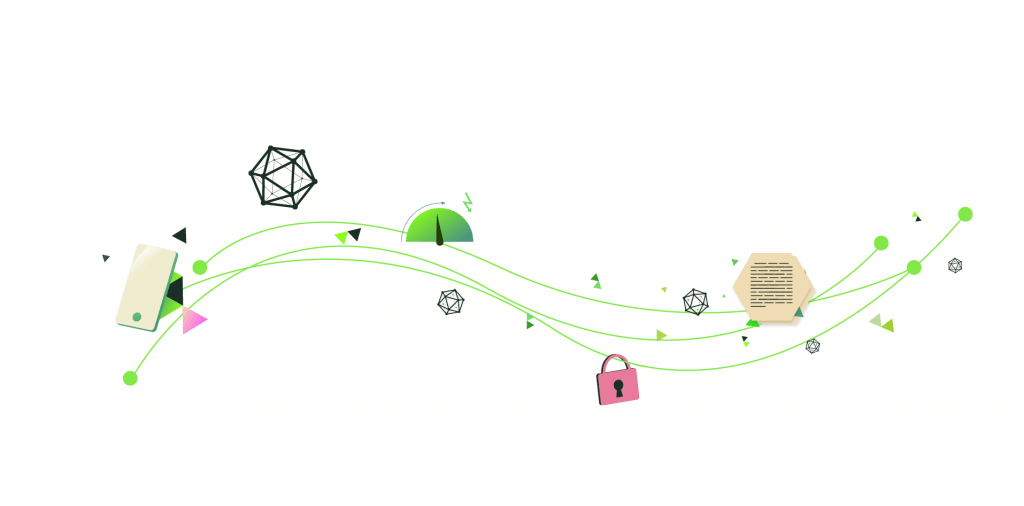Subscriptions via the blockchain as business model for traditional media
May 17, 2018
3 min. read
The quest for viable online business models in the press and media industry is as old as the World Wide Web itself. Why online advertising is harmful to quality journalism, micro payments don’t work and how anonymous one-click subscriptions could enable sustainable accounting models.
As early as in the 90’s, a business model emerged on the Internet which put human attention at its core: Advertising. What was born out of necessity became a culturally ingrained custom. While payment options do exist today, the willingness to pay is lacking. Paywalls for online subscriptions or micro payments for individual articles work only to some extent and are still — after twenty years of experimenting — an exception. Instead, the concept of zero marginal cost seems to be taken quite literally and is demanded by customers. At the same time, the price associated with the dominating business model becomes more and more apparent.
The quantity of content that is being produced nowadays as well as sensation-driven reporting (think “clickbaits”) are not conducive — particularly in the context of Fake News and the collective loss of trust in these institutions — for an already suffering industry. If traditional media is unable to find an alternative to the currently existing ad-based revenue model in the coming years, quality journalism will continue to take hits.
Problems when monetizing content via the blockchain
Much has been written about how the blockchain technology could help media and especially content producers to develop sustainable and efficient business models. Aggregators could be skipped and money could flow directly from consumer to producer. While this use case is useful and commendable, it will probably not supersede traditionally grown structures right away — because users actually appreciate the value added by such platforms as they prepare, curate and make content searchable.
From a technical perspective, the monetization at the level of individual articles, videos or songs seems only doable in theory: To offer micro payments in an economically viable way, transaction costs of the blockchain used would have to be low and predictable. To date, no blockchain offers such scalability yet — which means that this use case might still be a few years into the future.
However, it is doubtful whether micro payments will work this time around. Be it traditional/centralized approaches such as Flattr, Paypal Donate or proprietary solutions of individual media outlets, “pay-per-use” media consumption is apparently not in accordance with human psychology. This finding was noted back in 1996 by blockchain and cryptocurrency-pioneer Nick Szabo in his article “The Mental Accounting Barrier to Micropayments”.
Re-thinking money: Streaming money, ideal for subscriptions
An alternative to this issue could be blockchain-based subscriptions. However, there is no efficient method to use a cryptocurrency for a subscription-based business model yet. Currently, a subscriber would have to sign each transaction — for example every month — with a private key or alternatively have a sufficiently large amount of coins in an escrow account. Both options require effort and are simply cumbersome.
To solve this problem and to bill subscriptions via the blockchain, an Ethereum Improvement Proposal (EIP) on Subscription Models is currently discussed by the developer community.

A different suggestion is made by the lab10 collective. Their ARTIS blockchain aims to completely do away with the paradigm of recurring payments. Inspired by Andreas Antonopoulos’ thoughts about ‘Streaming Money’, coins (or tokens) are transferred continuously — not discretely — on the ARTIS blockchain. A so-called Streem is started with a transaction. Right away, money starts flowing at a pre-defined rate between two accounts — until the Streem (for example for a subscription) is stopped by another transaction.
This animation demonstrates how quickly and user-friendly a subscription can be made.
So-called Anonymous One-Click Subscriptions allow the user to start a subscription with just one click via the ARTIS infrastructure (compared to more than 50 clicks in traditional payment processes). And he neither has to register nor enter payment details to be able to do that. Thanks to this novel payment system, each customer not only saves 80% of his time, but also keeps his anonymity.
The willingness to start a subscription (with the option to cancel anytime) with this significantly improved usability is probably much higher than in current circumstances and the traditional framework. Thus, it can be assumed that more users would pay for good online content in the future.
The next big thing: Subscriptions on the blockchain?
This is how providers of One-Click Subscription services would benefit. Instead of running display ads, collecting data and using 3rd party payment gateways, they would have a direct and permanent cashflow — in the truest sense of the word. Especially traditional media could go back to using their preferred business model and concentrate on what it is doing best, which is pursuing quality journalism.
What starts with newspaper subscriptions can also be used for services in the sharing economy and can go as far as salary payments, rent, or pocket money.